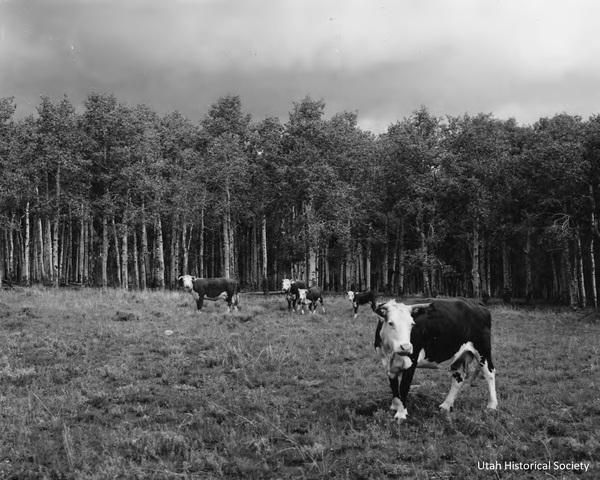Dublin Core
Title
Description
By the early twentieth century, unregulated use of public lands in Utah had led to a crisis of overuse and real damage. In what might seem like an odd move today, Utah leaders at the time addressed this overuse by rejecting a proposal to turn federal lands over to Western states, and instead fought for a greater federal role in local land management.
In response to the Great Depression, President Herbert Hoover supported a plan to transfer the surface rights of the public domain to the control of Western states. But it was Utah Governor George Dern who led opposition to this plan. Despite being an ardent states’ rights advocate, Dern traveled to Washington in 1932 to testify that Utah could not adequately manage these lands and was not interested in accepting responsibility for them. Dern said of the proposal, “Comes now the Government of the United States, … offering us what looks at a distance like a large, fine horse. As we get closer we have some difficulty in discerning whether it is actually a fine, large horse, or a fine, large white elephant.” Dern argued that federal management -- not state control -- would best maintain Western lands for common use.
Years earlier, Utahns had seen firsthand the consequences of an unregulated public domain, when overgrazing caused devastating floods and the degradation of rangelands. They had been key players in establishing federal management of public lands. Utah ranchers, politicians, and policy experts all joined Governor Dern in rejecting Hoover's transfer. Even the Utah Cattle and Horse Growers’ Association argued for a greater federal role in range management to prevent the kind of environmental disasters that Utah had already experienced. They all called for an executive agency to bureaucratize management of the unreserved public domain.
Hoover's land transfer bill ultimately died in committee, thanks to Western leaders' efforts to defeat it. Following the bill’s demise, Representative Don Colton of Utah introduced a bill to secure federal management of unappropriated lands. Although his bill failed, Colorado Representative Edward Taylor revived the idea and in 1934 the Taylor Grazing Act became law and established federal management of grazing on the public domain. We now know the federal Grazing Service as the Bureau of Land Management.
Creator
Source
_______________
See Benjamin Kiser, “Bucking the White Elephant: Utah’s Fight for Federal Management of the Public Domain, 1923-1934,” Utah Historical Quarterly 88 no 2 (2020): 79-97; Gregory E. Smoak, Nate Housley, and Megan Weiss, Rural Utah at a Crossroads(Salt Lake City: Utah Humanities, 2023).

